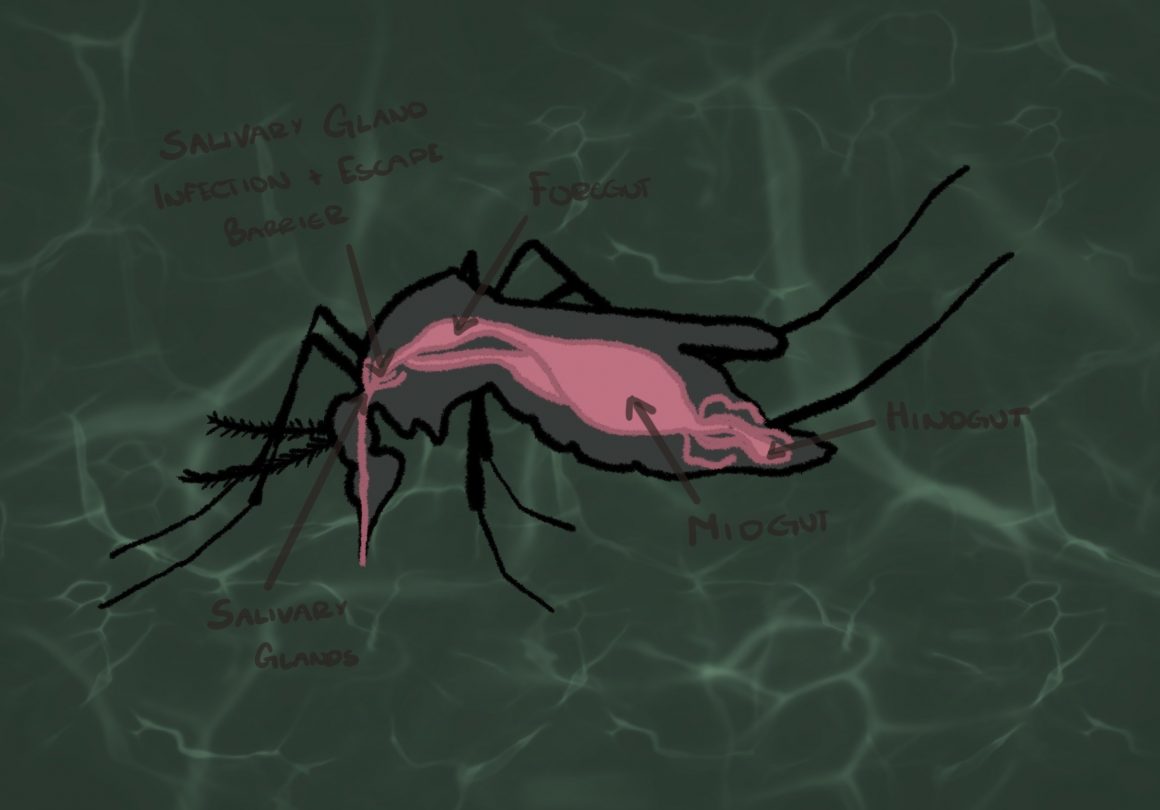
UCalgary researchers discover a new invasive mosquito species in Calgary carrying the West Nile Virus
By Devinya Nakandala, September 7 2023—
A group of researchers at the University of Calgary have discovered an invasive species of mosquito. They suspect that due to changes caused by global warming, it will continue to thrive in Calgary.
The research group led by Professor Dr. John Soghigian, Ph.D. from the Faculty of Veterinary Medicine at the University of Calgary and works towards identifying these mosquitoes and conducting molecular work to confirm the IDs of these mosquito species, culex pipiens. This team also works with the City of Calgary and collaborates with the City of Edmonton to better understand this species of mosquito.
Culex pipiens have lived alongside humans for a long time and is native to Europe and Asia.
“It’s been around humans for so long, we don’t actually know where it may have originated, or if it even has a single origination point, or if it’s just globally, or if it was just widespread throughout those continents. But it came to North America during early colonization,” said Soghigian.
Until recently, culex pipiens were thought to be restricted to Eastern Canada — the maritimes into eastern Ontario — and in the west coast of British Columbia. This is not the case anymore and they have been discovered throughout temperate regions of the world.
“It’s part of a group of mosquitoes that are all very similar to each other and can freely interbreed. Those mosquitoes are essentially found nearly everywhere. Although culex pipiens itself is more temperate, it is closely related to another mosquito that survives very well in the tropics,” said Soghigian.
Culex pipiens were first discovered in Edmonton in 2018 and it has become one of their most common mosquitoes. They were first discovered in Calgary in mid August 2022.
“We don’t have quantitative data yet to say how it compares to other mosquitoes, except that it’s everywhere. We found it in the downtown core. We found it in the suburbs. It’s all around Calgary now,” said Soghigian.
The West Nile virus emerged in 1999 in New York City and is spread globally now. The main vector of this virus is culex pipiens.
“How culex pipiens will change the West Nile virus and Calgary is something we don’t know, and is something that my students are just starting to look into. That’s our future direction, it’s trying to understand veterinary and public health consequences from this mosquito. Because one thing that’s important to note is that this mosquito will predominantly feed on birds and then occasionally feed on mammals,” said Soghigian.
Soghigian also mentioned that the West Nile virus circulates in bird populations and then spills over into humans.
“When the birds get really infected and the mosquitoes are biting the birds, occasionally a mosquito that bites a bird will then go and bite a human. That can give us West Nile virus at that point in time, or give a horse West Nile virus, which is actually very commonly how it’s transmitted to mammals.”
Dumping standing water on your property, changing bird baths regularly, limiting the use of flower pots that collect water at the bottom and using bug spray are ways that you can use to control this mosquito species from spreading.
By working with both the major municipalities in Alberta — Edmonton and Calgary — this research team hopes to figure out where this mosquito is in the province as a whole, how far outside of the cities it has spread, how it could affect our agriculture, the effect that this would have on our public health and lastly, if the mosquito populations in Edmonton and Calgary are from the same original stock or if it’s two separate invasions that occurred at the same approximate timing but from different places.
“Then finally, we’re actually hoping to get information about this mosquito out, and also driving home the message that this is the first invasive mosquito that Alberta has had, but not the last,” said Soghigian.
Soghigian states that the University of Calgary has been very helpful with providing this research project with sufficient funding for students to work and has also provided this project grant money to conduct some of the initial molecular diagnostics.
“The university itself has been very supportive and has really helped us bring students into the project,” said Soghigian.
More information about Dr. John Soghigian’s research findings can be found online.
